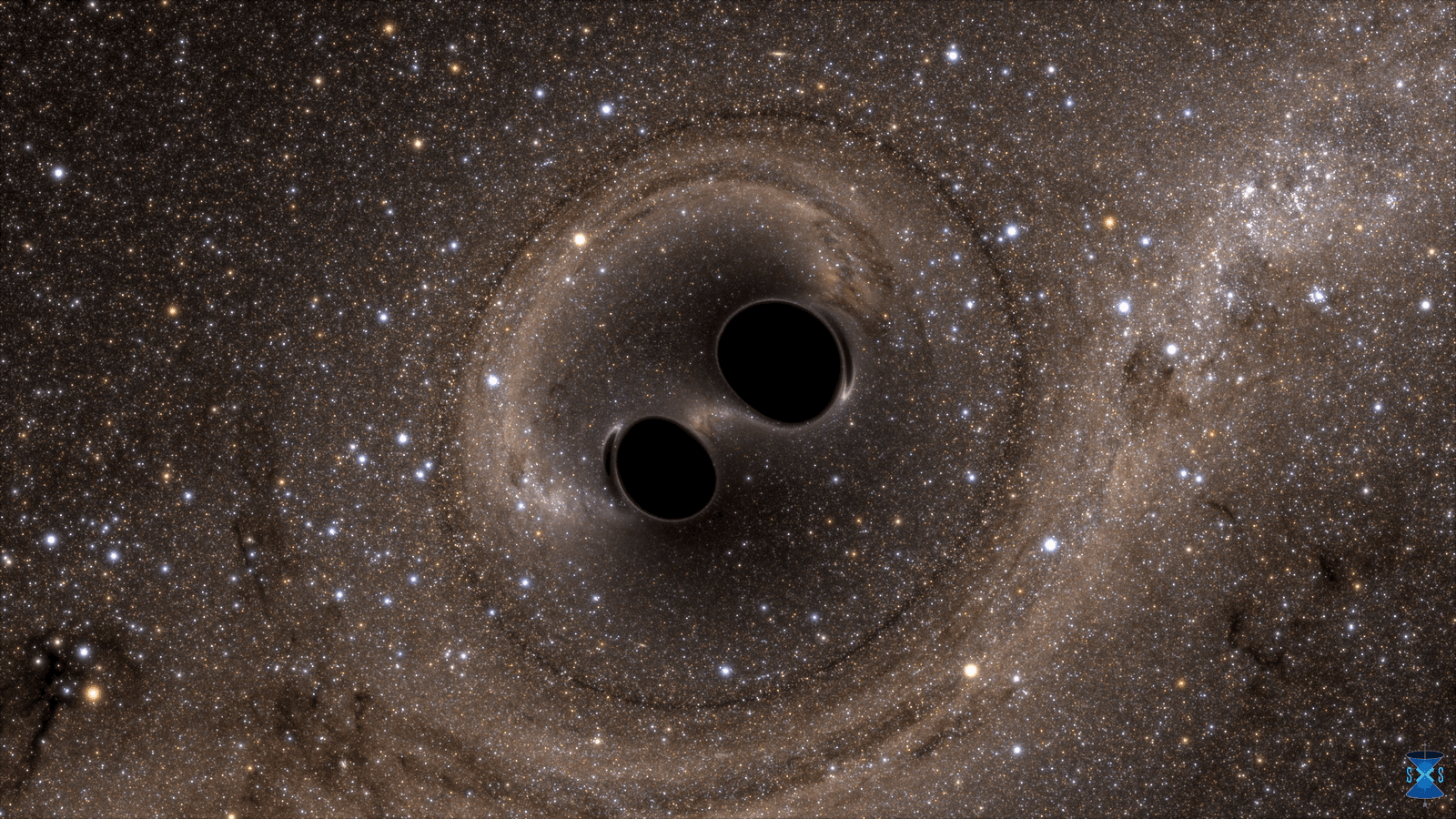Nobel-winning US astrophysicists bring us closer to the ‘birth of the universe’
The collision of two black holes — a tremendously powerful event detected for the first time ever by the Laser Interferometer Gravitational-wave Observatory, or LIGO — is seen in this still image from a computer simulation. Scientists have for the first time detected gravitational waves, ripples in space and time hypothesized by Albert Einstein a century ago, in a landmark discovery that opens a new window for studying the cosmos.
US astrophysicists Barry Barish, Kip Thorne and Rainer Weiss were awarded the Nobel Physics Prize Tuesday for the discovery of gravitational waves, offering a sneak peek at the universe's very beginnings.
Predicted by Albert Einstein a century ago as part of his theory of general relativity, gravitational waves are "ripples" in space-time — the theoretical fabric of the cosmos.
They are the aftermath of violent galactic events, such as colliding black holes or imploding massive stars, and can reveal events that took place billions of years ago.
The first detection of gravitational waves happened in Sept. 2015 at the US-based Laser Interferometer Gravitational-wave Observatory (LIGO), where the three Nobel laureates worked.
"Their discovery shook the world," said Goran K. Hansson, the head of the Swedish Royal Academy of Sciences which selects the Nobel laureates.
Announced in Feb. 2016 to great excitement in the scientific community, the discovery was hailed as the historic culmination of decades of research.
Travelling at light speed
In 1984, Thorne, now 77, and Weiss, 85, co-created LIGO at the prestigious California Institute of Technology, which has taken home 18 Nobels since the prizes were first awarded in 1901.
Barish, 81, joined the project in 1994 and helped bring it to completion. LIGO is now a collaboration between more than 1,000 researchers from 20 countries.
The 2015 observation was of two black holes smashing into each other some 1.3 billion light-years away.
"Although the signal was extremely weak when it reached Earth, it is already promising a revolution in astrophysics," the Nobel academy said.
"Gravitational waves are an entirely new way of following the most violent events in space and testing the limits of our knowledge."
In an interview on the Nobel prize website, Thorne said the discovery will enable scientists to see an "enormous number of things" in coming decades.
Related: A physicist who proved Einstein right started by tinkering with the family record player
"We will see neutron stars collide, tear each other apart, we will see black holes tearing neutron stars apart, we will see spinning neutron stars, pulsars … We'll be exploring basically the birth of the universe."
Gravitational waves are minuscule, and near-undetectable because they interact very weakly with matter and travel through the universe at the speed of light unimpeded.
The ripples emitted by a pair of merging black holes, for example, would stretch a 621,000-mile ruler on Earth by less than the size of an atom.
Since 2015, the enigmatic ripples have been detected three more times: twice by LIGO and once by the Virgo detector located at the European Gravitational Observatory (EGO) in Cascina, Italy.
"Einstein was convinced it would never be possible to measure them," the jury said.
"The LIGO project's achievement was using a pair of gigantic laser interferometers to measure a change thousands of times smaller than an atomic nucleus, as the gravitational wave passed the Earth."
'Universe full of music'
Black holes emit no light, and can only be observed through gravitational waves that occur when they collide and violently merge — offering scientists a means of studying them.
"If we could hear all the waves and not only the strongest ones, the entire universe would be full of music, like birds chirping in a forest, with a louder tone here and a quieter one there," the academy said.
Weiss was awarded half the prize, which comes with nine million Swedish kronor (about $1.1 million), while Barish and Thorne shared the rest.
"It's really wonderful. I view this more as a thing that recognizes the work of about a thousand people," Weiss said shortly after the announcement.
"It took us a long time … two months … to convince ourselves that we had seen (something) that came from the outside and was truly a gravitational wave."
Thorne said he had expected the discovery to be honored with a Nobel one day.
"I didn't hope it would go to me personally, I hoped it would actually go to the entire collaboration … which designed, built, and perfected the gravitational waves detector which made the discovery," he said.
Caroline Crawford, an astronomer at Cambridge University, told AFP the discovery "holds the potential for a completely new way of observing parts of the cosmos, the parts … completely obscured from our view."
On Wednesday, the chemistry prize will be announced, amid speculation it could go to a gene-editing technique known as the CRISPR-Cas9 DNA snipping tool, a type of genetic "scissors" used to cut out a mutated gene in a human embryo and replace it by a corrected version.
Or it could go to John Goodenough, a 95-year old electrochemist whose research led to the invention of the rechargeable lithium ion battery present in cellphones, computers and electric cars.
Pia Ohlin of AFP reported from Stockholm.
The story you just read is accessible and free to all because thousands of listeners and readers contribute to our nonprofit newsroom. We go deep to bring you the human-centered international reporting that you know you can trust. To do this work and to do it well, we rely on the support of our listeners. If you appreciated our coverage this year, if there was a story that made you pause or a song that moved you, would you consider making a gift to sustain our work through 2024 and beyond?
